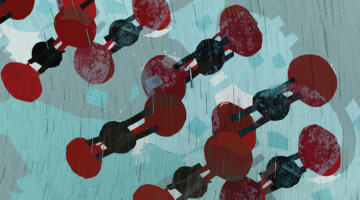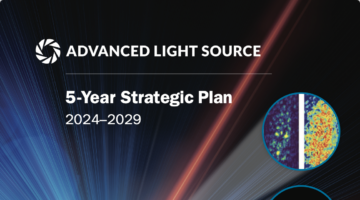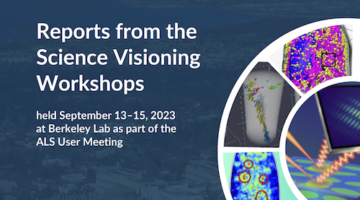The ALS was a major selling point when Whitney Loo chose where to pursue her PhD. Now that she runs her own research group at the University of Wisconsin-Madison, she is maintaining her ties and giving back to the ALS community by serving on the UEC. Read more »
Native American Interns Explore Engineering Opportunities at the Lab
This last summer, Berkeley Lab hosted three students from Navajo Technical University in a DOE-funded initiative that partners national labs with learning institutions whose populations are historically underrepresented in science. The goal is to increase enrollment of Native American students in Navajo Tech engineering programs. Read more »
Excited States in CO2 Clusters Shed Light on Astrochemical Formation Mechanisms
A vacuum ultraviolet photoionization study conducted at the ALS revealed a new mechanism between molecules that converts high-energy ultraviolet light into free electrons. The results provide insights into interactions between CO2 and organic molecules, which are crucial for understanding astrochemical interactions as well as green chemistry and renewable energy development. Read more »
2024 Berkeley Lab Director’s Awards in Recognition of ALS Staff
The Berkeley Lab Director’s Awards program recognizes the significant achievements of Lab employees. Join us in congratulating Andreas Scholl, Gregory Su, Ina Reichel, and the many members of the ALS community who received Director’s Awards in 2024. Read more »
The ALS Releases New Version of Strategic Plan
The Advanced Light Source’s five-year strategic plan is now available, presenting our vision to be a premier synchrotron facility through team innovation and advanced technologies. Developed collaboratively with staff, partners, and users, the plan charts our course to deliver world-class capabilities with ALS-U and beyond, building on 2023 User Meeting science visioning workshops. Read more »
Tracking Oxidation in “High-Entropy” Alloys with Multiple Principal Elements
For extreme applications such as nuclear fusion reactors and high-temperature jet engines, scientists are experimenting with “high-entropy” alloys that consist of many metals mixed together in equal proportions. In this work, researchers begin to unravel how these materials degrade under high-temperature oxidative environments. Read more »![]()
The Spatial Dynamics of Bone Remodeling During Lactation
To mobilize the minerals needed for milk production, osteocytes—the cells responsible for maintaining bone quality—facilitate the release of calcium and other minerals from the bone matrix surrounding them. In this study, researchers investigated how osteocytes balance the rapid release of calcium with maintaining bone integrity. Read more »![]()
Manganese Cathodes Could Boost Lithium-ion Batteries
Rechargeable lithium-ion batteries are used in mobile devices, electric vehicles, and energy storage systems. But supplies of nickel and cobalt, commonly used in the cathodes of these batteries, are limited. New research opens up a potential low-cost, safe alternative in manganese, the fifth most abundant metal in the Earth’s crust. Read more »
Postdoctoral Fellowship Application Window to Open in October
Applications for the next round of ALS Collaborative Postdoctoral Fellowships are due November 1 for a start date of May 1, 2025. Fellows spend a year in residence at the ALS pursuing research projects in teams that include staff and the user community, and are exposed to current scientific challenges that can be tackled using advanced synchrotron radiation tools. Read more »
Reports from 2023 Science Visioning Workshops Published
The compiled reports from four ALS science visioning workshops held in 2023 are now published. The document reflects the user and broader scientific communities’ viewpoints on how the ALS’s science portfolio should evolve into the 2030s and where investments will be needed to realize the vision. Read more »
- « Previous Page
- 1
- 2
- 3
- 4
- 5
- 6
- …
- 27
- Next Page »









